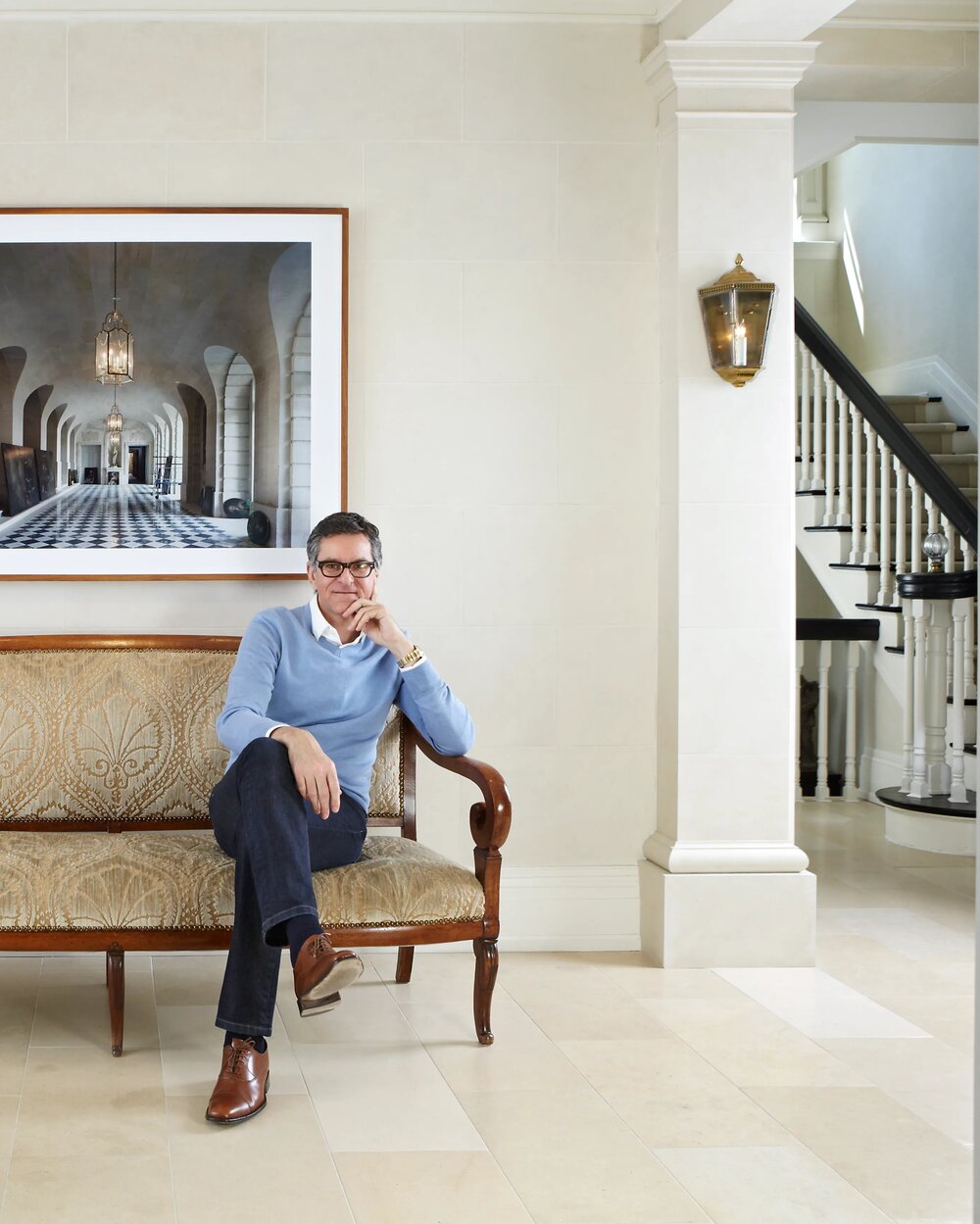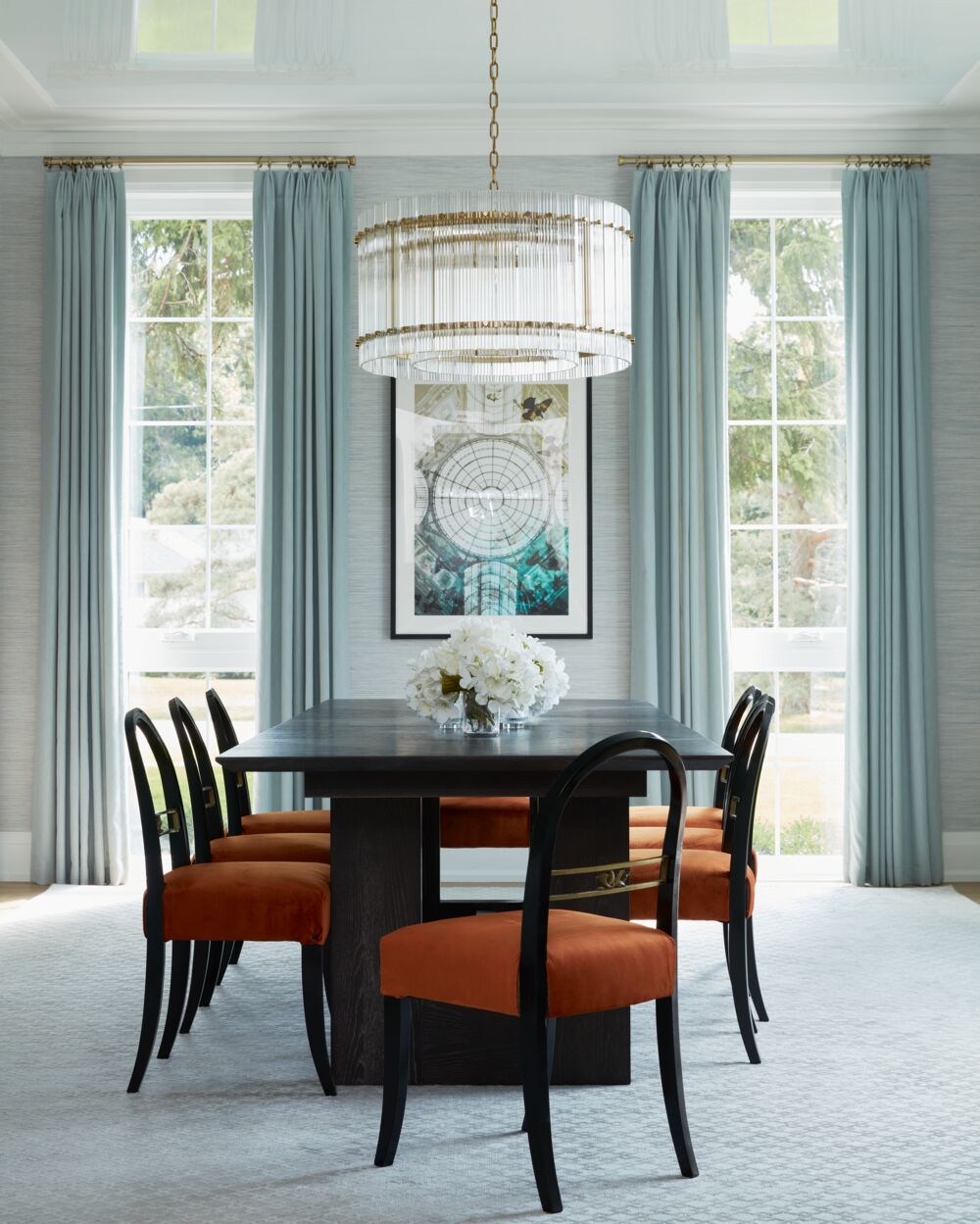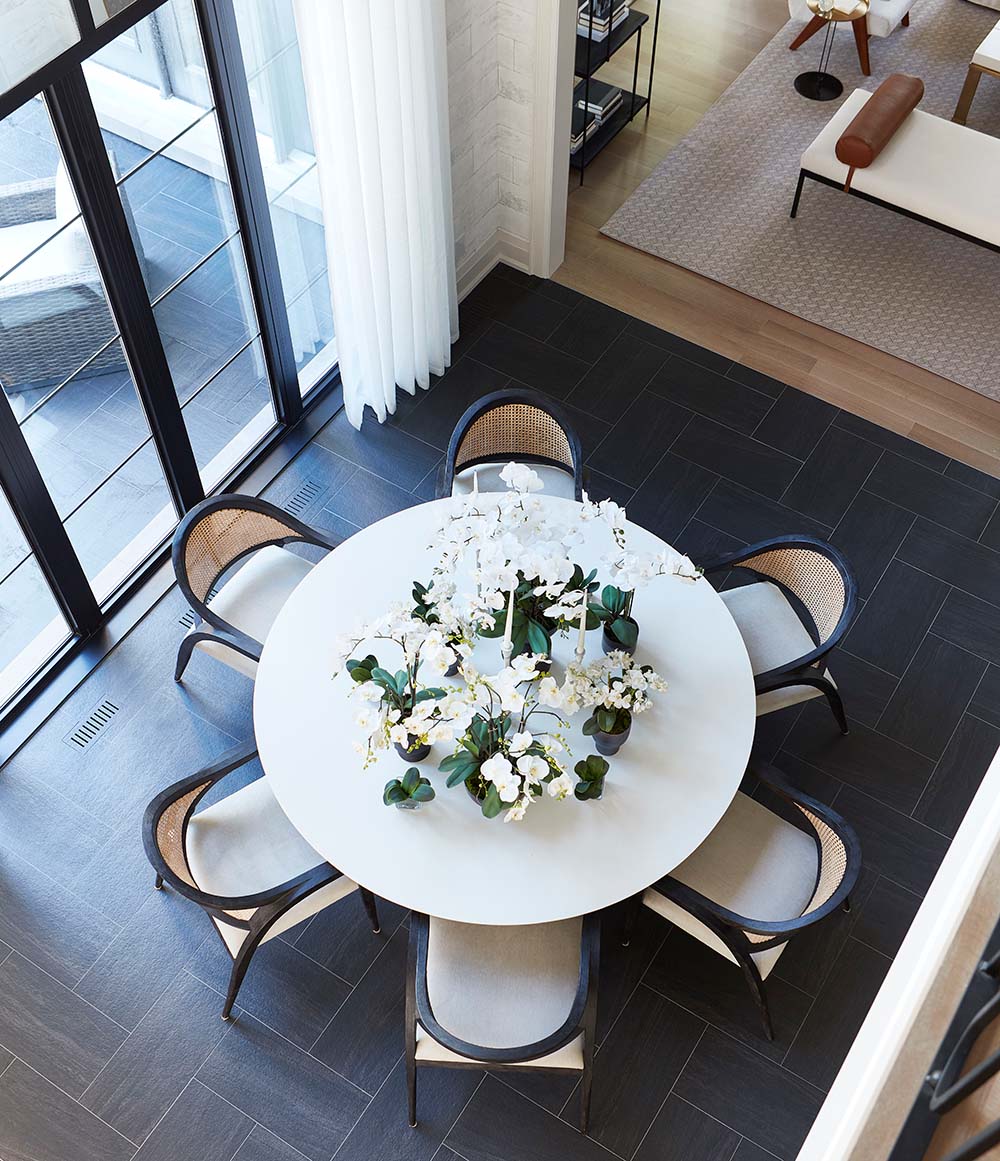
Whether you’re hosting a holiday dinner or enjoying a weeknight meal, a well-designed dining room can make everyday moments feel more special. From layout and lighting to colour and comfort, there are so many ways to elevate this important space. In this edition of Ask Brian, interior designer Brian Gluckstein shares his expert dining room design tips to help you create a room that’s both welcoming and stylish.
Dining Room Layout and Table Selection
Does a dining room have to be located right next to the kitchen?
Not necessarily. For convenience, it should be nearby, but it doesn’t have to be directly beside the kitchen. In some homes, I’ve transformed a large living room into a dining room and placed a smaller seating area elsewhere. It all depends on how you live and entertain.
When is a round dining table better than a rectangular one?
If your dining room is more square in shape, a round table usually fits better and makes the room feel balanced. I also love round tables for entertaining. They make it easy for everyone to see and talk to each other—there’s a natural intimacy that works really well for dinner parties.
Colour, Wall Treatments, and Rug Placement
How do I design a dramatic dining room?
To add drama, I often suggest painting the walls in a deep, rich colour—especially in a high-gloss finish. Because dining rooms are mostly used in the evening, the reflective glow from candlelight and pendants bounces beautifully off glossy walls, creating an inviting and atmospheric space.
Can you recommend a wall treatment other than wainscoting or wallpaper?
Wallpaper is always a favourite of mine for dining rooms, but if you want something different, a wall of art can be just as impactful. Try a symmetrical grid of black-and-white photography—something like sixteen small frames arranged four by four. It creates a strong focal point and a graphic edge to the room.

Should I use a rug under a dining table?
I like using a rug in dining rooms and even in eat-in kitchen areas. It helps to define the space and adds warmth and softness. Just be sure the rug is large enough that chairs remain on it when pulled out—usually about 30 to 36 inches larger than the table on all sides. In casual spaces, I often use indoor-outdoor rugs for easy cleaning.
Lighting and Ambience
What’s the best lighting for a dining room?
Good lighting is one of the most overlooked dining room design tips. Layered lighting is key. You’ll want a statement fixture like a chandelier or pendant above the table, but I also like to include wall sconces or buffet lamps to create mood. In dining rooms, softer lighting works best. I always recommend using dimmers so you can adjust the brightness depending on the occasion.
Should a dining room chandelier be centred over the table or in the room?
Always centre it over the table. If the table isn’t in the centre of the room—maybe it’s positioned to work with an open-concept layout—your light fixture should follow the table. That keeps the composition balanced and visually anchored.

Drapery and Window Coverings
What’s the best window treatment for a dining room?
When I’m asked for dining room design tips, I often recommend full-length drapery—even if the window is small. It adds softness and elegance, making the space feel more finished. If privacy or light control is important, layer in Roman shades or fabric roller blinds behind the drapes. For a tailored look, mount the drapery rod close to the ceiling and ensure the fabric just grazes the floor—it makes the room feel taller and more finished.
Should dining room drapery match adjacent spaces in an open-concept home?
They should coordinate, yes. In open-concept homes, visual flow is important. That doesn’t mean everything has to match perfectly, but the colours, materials, or styles should speak to each other. A sheer in one room and a heavier linen in another can work, as long as the palette connects.

Decor and Style Details
How do I style a dining table when it’s not being used?
I like a simple arrangement in the centre of the table—often a cluster of candlesticks or a collection of bud vases. You can use varying heights to add interest, but keep it low enough to maintain sightlines across the room.
Does dining room decor need to match the rest of the home?
If your home has an open-concept layout, it’s important for the dining room decor to feel cohesive with adjacent spaces. For example, if your living room is more modern, you could pair a vintage dining table with sleek chairs that connect back to the style of the living area. That mix makes the room feel collected, not disconnected.
Whether you’re planning a full redesign or looking to make a few impactful changes, Brian Gluckstein’s dining room design tips offer expert guidance on everything from layout and lighting to wall treatments and decor. With a few thoughtful updates, your dining room can become one of the most beautiful and functional spaces in your home. Have more dining room design questions? Follow @glucksteinhome to submit yours for the next Ask Brian feature.
Photography by Kelly Horkoff (1), Kim Jeffery (2), Angus Fergusson (3)